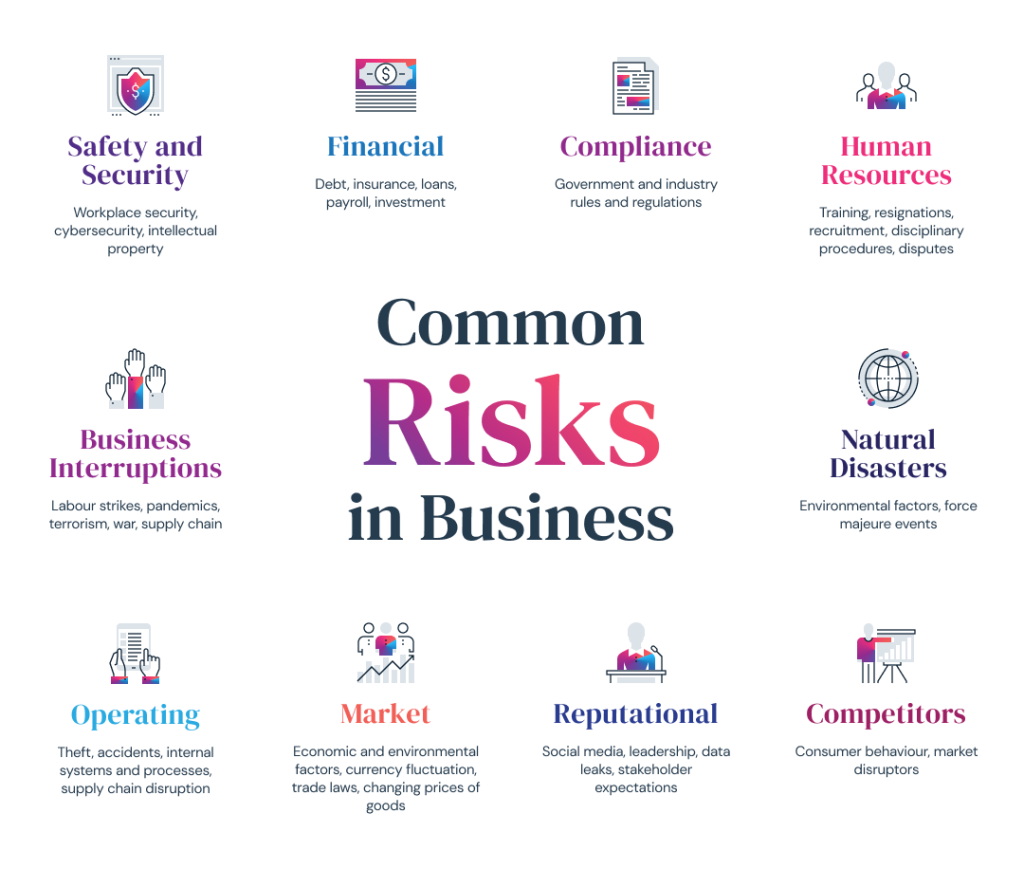Risk management has been a buzzword in the world of (big) business for some time. But, in a competitive and ever-evolving world, it has become equally essential for small businesses to incorporate risk management strategies into their daily operations.
As Gary Cohn, Vice Chairman of IBM, famously said, “If you don’t invest in risk management, it doesn’t matter what business you’re in, it’s a risky business.”
He’s right. Learning how to manage the different types of risk your business is exposed to – and implementing the appropriate processes, structure, and governance to detect and deter them – is vital if a company wants to survive and thrive.
What is risk management?
At its core, risk management forecasts the potential for negative consequences and predicts how these might impact a business or situation. These risks are both internal (operational, financial, human resources) and external (natural disasters, supply chain, market disruptions, government compliance).
During this process, managers identify, analyse, prioritise, monitor, and respond to risks. Depending on the business’s tolerance levels, management can accept the risks or deny them and choose an alternate approach.
Applying risk management to all businesses, big and small

Whether you are a one-person operation, a small start-up, or a large enterprise, risk management applies equally.
Personal business
The biggest risk to a personal business, such as a financial advisor, freelance worker, or private contractor, is key person loss. This happens when the owner cannot work and the business grinds to a halt. The subsequent loss of income puts them at substantial financial risk as well as operational risks and business interruption.
Small business
One of the biggest threats to small businesses is the financial risks brought on by uncertain economic and market conditions. This affects everything from business continuity to cash flow, payroll, debt repayment, and purchasing power. Strategic risks come from a lack of planning for each stage of the business life cycle and not considering shifting external environments, like technological advancements and a changing competitor landscape.
Enterprise businesses
The larger the enterprise, the more risks it is exposed to. The primary risks, however, are related to the financial, strategic, and operational sectors. Financial risks include increased costs, a decline in revenues, and business disruption due to natural and political disasters and major macroeconomic shifts. Some businesses take strategic risks knowingly, such as higher-risk, higher-reward ventures.
An important risk to have on your radar if you’re part of an enterprise is the SA government’s Broad-Based Black Economic Empowerment (B-BBEE) initiative. A lack of certification creates reputational and financial risks, impacting contracts, licences, funding, and tenders from government and private companies.
Prioritise Managing Risk for a Secure Business
If you find risk management as fascinating as we do, now’s the time to secure the hatches with our Foundations of Risk Management course. We’ve partnered with Wits Business School to provide an accessible online course in the essentials of risk management. With a maximum time investment of just six hours per week, you can protect your business and avoid unnecessary risks. To learn more about the Foundations of Risk Management online course, read more here, and start tackling business risks today.


